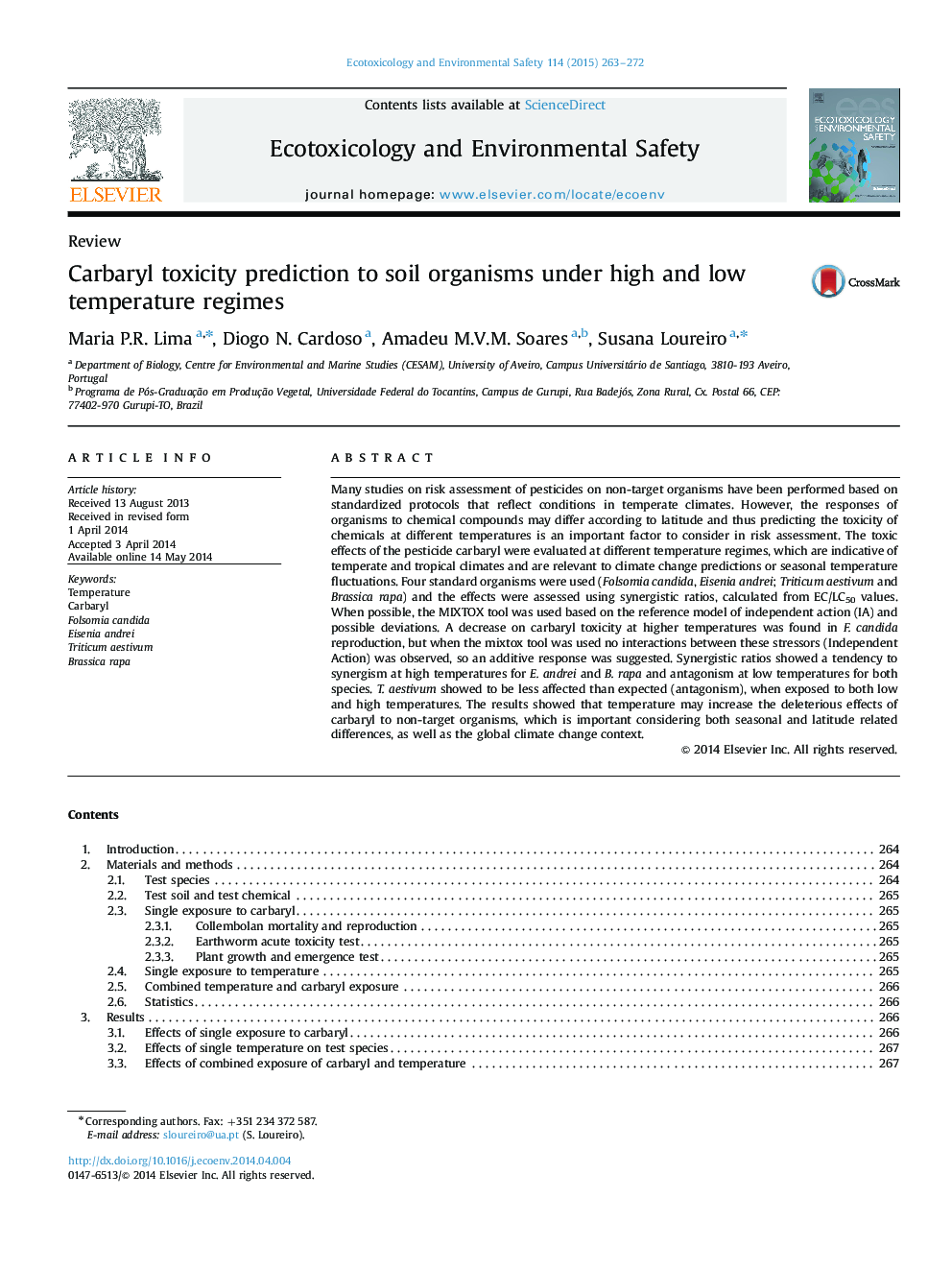| Article ID | Journal | Published Year | Pages | File Type |
|---|---|---|---|---|
| 4419824 | Ecotoxicology and Environmental Safety | 2015 | 10 Pages |
•Temperature may cause changes on chemicals’ toxicity or bioavailability.•The Independent Action model was used in the combined exposure data.•Synergistic interactions were generally observed at high temperatures.•Antagonistic interactions were generally observed at low temperatures.
Many studies on risk assessment of pesticides on non-target organisms have been performed based on standardized protocols that reflect conditions in temperate climates. However, the responses of organisms to chemical compounds may differ according to latitude and thus predicting the toxicity of chemicals at different temperatures is an important factor to consider in risk assessment. The toxic effects of the pesticide carbaryl were evaluated at different temperature regimes, which are indicative of temperate and tropical climates and are relevant to climate change predictions or seasonal temperature fluctuations. Four standard organisms were used (Folsomia candida, Eisenia andrei; Triticum aestivum and Brassica rapa) and the effects were assessed using synergistic ratios, calculated from EC/LC50 values. When possible, the MIXTOX tool was used based on the reference model of independent action (IA) and possible deviations. A decrease on carbaryl toxicity at higher temperatures was found in F. candida reproduction, but when the mixtox tool was used no interactions between these stressors (Independent Action) was observed, so an additive response was suggested. Synergistic ratios showed a tendency to synergism at high temperatures for E. andrei and B. rapa and antagonism at low temperatures for both species. T. aestivum showed to be less affected than expected (antagonism), when exposed to both low and high temperatures. The results showed that temperature may increase the deleterious effects of carbaryl to non-target organisms, which is important considering both seasonal and latitude related differences, as well as the global climate change context.
